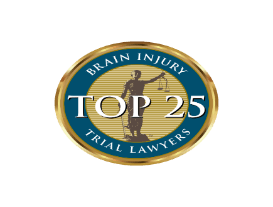Side-Impact Collisions: Causes, Consequences, and Safety Measures
Introduction
Side-impact collisions, also known as T-bone accidents, are among the most dangerous types of car crashes. These accidents occur when the front of one vehicle strikes the side of another, often resulting in severe injuries or fatalities. In this comprehensive article, we will delve into the world of side-impact collisions, exploring their causes, consequences, and effective safety measures.
Understanding Side-Impact Collisions
A side-impact collision happens when the front end of one vehicle crashes into the side of another vehicle. These accidents typically occur at intersections when one vehicle fails to yield the right of way or disregards a stop sign or red light. Side-impact collisions can also happen when a vehicle is hit on the side while it is legally proceeding through an intersection.
Causes of Side-Impact Collisions
Several factors can contribute to side-impact collisions, making them a significant concern on our roadways. Common causes include:
-
Running Red Lights or Stop Signs: Disregarding traffic signals is a leading cause of side-impact collisions. Drivers who fail to stop at intersections put themselves and others at risk.
-
Failure to Yield Right of Way: When a driver fails to yield the right of way to another vehicle, especially at intersections, it can lead to a side-impact collision.
-
Distracted Driving: Texting, talking on the phone, or engaging in other distractions can divert a driver’s attention away from the road, leading to accidents.
-
Speeding: Excessive speed reduces a driver’s ability to react to changing traffic conditions. In scenarios where quick decisions are necessary, speeding can result in side-impact collisions.
-
Impaired Driving: Alcohol, drugs, or even prescription medications can impair a driver’s judgment and coordination, increasing the likelihood of side-impact collisions.
-
Inadequate Signage: Poorly marked intersections or missing traffic signs can contribute to confusion and side-impact collisions.
-
Weather Conditions: Adverse weather conditions, such as rain, snow, or ice, can reduce visibility and traction, making side-impact collisions more likely.
Consequences of Side-Impact Collisions
Side-impact collisions often result in severe consequences, including:
-
Serious Injuries: Occupants on the side of the vehicle that is struck are particularly vulnerable to injury. Common injuries include head injuries, broken bones, and internal injuries.
-
Fatalities: Due to the high forces involved, side-impact collisions can be deadly, especially if the collision occurs at high speeds.
-
Vehicle Damage: The impact from a side-impact collision can cause extensive damage to vehicles, often resulting in total loss or costly repairs.
-
Emotional Trauma: Survivors of side-impact collisions often experience emotional trauma, including post-traumatic stress disorder (PTSD), anxiety, and depression.
-
Financial Costs: The financial costs associated with side-impact collisions can be substantial, including medical bills, vehicle repairs, legal fees, and potential loss of income.
-
Legal Consequences: Drivers at fault in side-impact collisions may face legal consequences, including fines, license suspension, or imprisonment, depending on the circumstances.
Safety Measures and Prevention
Preventing side-impact collisions requires a multi-faceted approach involving responsible driving, improved infrastructure, and enhanced safety features. Here are some effective safety measures:
-
Obey Traffic Signals: Always adhere to traffic signals, stop signs, and yield signs. Avoid running red lights or failing to stop at intersections.
-
Avoid Distractions: Stay focused on the road and avoid distractions such as texting, talking on the phone, or adjusting the radio while driving.
-
Yield Right of Way: Be attentive to other vehicles and pedestrians, and yield the right of way when required, especially at intersections.
-
Defensive Driving: Practice defensive driving techniques, such as scanning intersections for potential hazards and being prepared to react to unexpected situations.
-
Proper Signage: Authorities should ensure that intersections are well-marked with clear signage, improving visibility and reducing confusion.
-
Intersection Design: Implement safe intersection design principles, including dedicated turning lanes, to reduce the risk of side-impact collisions.
-
Vehicle Safety Features: Invest in vehicles equipped with advanced safety features, such as side airbags and collision avoidance systems, which can reduce the severity of side-impact collisions.
Conclusion
Side-impact collisions are devastating events that can have profound consequences for individuals and society. Understanding the causes, consequences, and safety measures is essential for reducing the frequency and severity of these accidents. By promoting responsible driving, enforcing traffic laws, improving intersection design, and equipping vehicles with advanced safety features, we can work together to prevent side-impact collisions and create safer roadways for everyone. Ultimately, the goal is to minimize the devastation caused by these accidents, ensuring that families and communities are spared from the profound pain and suffering they bring.









